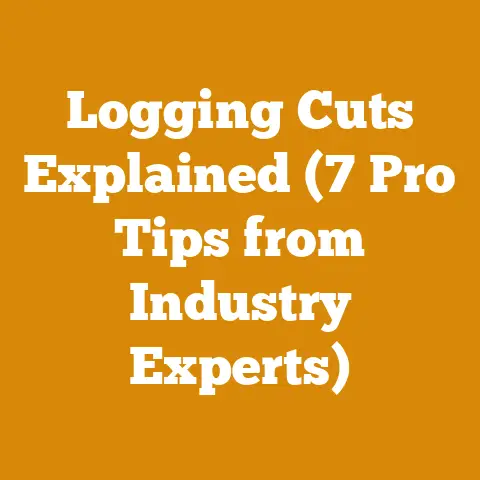Bell Feller Buncher Guide (Timber Harvesting Insights Explained)
Introduction: Embracing Sustainable Timber Harvesting with Bell Feller Bunchers
Bell Feller Buncher Guide: Timber Harvesting Insights Explained
The Bell Feller Buncher is a specialized piece of forestry equipment designed to efficiently fell (cut down) trees and bunch them together in preparation for skidding or forwarding. These machines are essential in modern timber harvesting operations, increasing productivity and reducing labor costs. I’ve worked with various models over the years, and I can attest to their significant impact on efficiency. This guide will cover everything you need to know about Bell Feller Bunchers, from their mechanics to their operational considerations.
What is a Feller Buncher?
A feller buncher is a self-propelled machine equipped with a cutting head designed to sever trees at the base. What sets it apart is its ability to not only fell trees but also to accumulate and bunch them together. These bunches make subsequent extraction processes (skidding or forwarding) significantly faster and more organized. Think of it as a tree-felling and organizing machine rolled into one. They are available in both tracked and wheeled configurations, each offering advantages depending on the terrain and operating conditions.
Why Bell Feller Bunchers?
Bell Equipment is a well-regarded manufacturer of forestry equipment, known for its robust design and reliability. Bell feller bunchers are particularly popular because of their maneuverability, especially in tight or challenging terrain. Their articulated chassis allows for excellent agility, making them suitable for selective harvesting and thinning operations, where minimizing damage to remaining trees is crucial. From my experience, their fuel efficiency is also a significant advantage, contributing to lower operating costs.
Understanding the Mechanics and Functionality
Bell Feller Bunchers are complex machines. Let’s delve into the key components and how they work together.
The Cutting Head: The Heart of the Operation
The cutting head is the business end of the feller buncher. It’s responsible for severing the trees. There are two primary types of cutting heads:
- Shear Heads: These heads use a large, scissor-like blade to shear the tree at the base. They are quick and efficient, particularly for smaller diameter trees. However, they can cause some compression damage to the wood. I’ve seen shear heads used extensively in pulpwood operations where speed is critical.
- Saw Heads: These heads employ a circular saw or chain saw to cut the trees. They provide a cleaner cut with less damage to the wood, making them preferable for sawlog operations where wood quality is paramount. Saw heads are generally slower than shear heads but offer superior cutting precision.
The choice between a shear head and a saw head depends on the specific harvesting objectives and the type of timber being harvested.
The Accumulator Arms: Gathering the Harvest
The accumulator arms are crucial for the “bunching” aspect of the feller buncher. These arms surround the cutting head and allow the operator to accumulate multiple trees before depositing them in a neatly arranged bunch. This significantly streamlines the skidding or forwarding process. The capacity of the accumulator arms (the number of trees they can hold) varies depending on the machine model and the size of the trees being harvested.
The Carrier: Mobility and Stability
The carrier is the base of the feller buncher, providing mobility and stability. As mentioned earlier, carriers come in two main types:
- Tracked Carriers: Tracked carriers offer superior traction and stability, making them ideal for steep slopes, soft ground, and rough terrain. They distribute the machine’s weight over a larger surface area, reducing ground pressure and minimizing soil disturbance. I’ve found tracked machines invaluable in mountainous logging operations.
- Wheeled Carriers: Wheeled carriers are faster and more maneuverable on relatively flat and firm ground. They are also generally less expensive to maintain than tracked carriers. However, they are less suitable for steep slopes or soft ground. Wheeled machines excel in plantation harvesting where the terrain is typically more uniform.
The choice of carrier depends on the specific terrain conditions of the harvesting site.
The Hydraulic System: Powering the Machine
The hydraulic system is the lifeblood of the feller buncher, providing the power to operate the cutting head, accumulator arms, and carrier. This system consists of a hydraulic pump, hydraulic fluid, valves, and cylinders. Maintaining the hydraulic system is crucial for ensuring the machine’s optimal performance and longevity. Regular fluid checks, filter changes, and leak inspections are essential.
Operational Considerations: Maximizing Efficiency and Safety
Operating a Bell Feller Buncher effectively requires careful planning, skilled operation, and a strong focus on safety.
Site Assessment and Planning
Before commencing any harvesting operation, a thorough site assessment is crucial. This assessment should consider:
- Terrain: Slope, soil type, and ground conditions.
- Tree Species and Size: Determines the appropriate cutting head and machine size.
- Environmental Considerations: Identifying sensitive areas and implementing measures to minimize environmental impact.
- Harvesting Objectives: Clear goals for the harvesting operation (e.g., selective thinning, clear-cutting).
Based on the site assessment, a detailed harvesting plan should be developed, outlining the cutting patterns, bunching locations, and extraction routes.
Operator Training and Skill
Operating a feller buncher is a skilled job that requires extensive training and experience. Operators must be proficient in:
- Machine Operation: Mastering the controls and understanding the machine’s capabilities and limitations.
- Felling Techniques: Employing proper felling techniques to ensure safe and efficient cutting.
- Bunching Strategies: Arranging the bunches in a way that facilitates easy extraction.
- Safety Procedures: Adhering to strict safety protocols to prevent accidents and injuries.
I always emphasize the importance of continuous training and skill development for feller buncher operators. It’s an investment that pays off in increased productivity, reduced downtime, and a safer work environment.
Felling Techniques: Precision and Control
Proper felling techniques are essential for maximizing efficiency and minimizing damage to the remaining trees. Key considerations include:
- Tree Lean: Assessing the natural lean of the tree and felling it in the direction of the lean whenever possible.
- Obstacles: Identifying and avoiding obstacles such as rocks, stumps, and other trees.
- Cutting Height: Cutting the tree as close to the ground as possible to maximize timber yield.
- Directional Felling: Strategically felling trees to create clear extraction paths.
Bunching Strategies: Streamlining Extraction
The way trees are bunched significantly impacts the efficiency of the skidding or forwarding process. Best practices include:
- Bunch Size: Creating bunches of appropriate size for the skidding or forwarding equipment being used. A good rule of thumb is to match the bunch size to the capacity of the extraction equipment.
- Bunch Orientation: Orienting the bunches with the logs aligned in the direction of extraction. This minimizes the need for the skidder or forwarder operator to maneuver the logs.
- Bunch Location: Placing the bunches in accessible locations along designated extraction routes. Avoid placing bunches in areas that are difficult to reach or that require excessive maneuvering.
Safety Procedures: A Non-Negotiable Priority
Safety is paramount in any logging operation, and operating a feller buncher is no exception. Key safety procedures include:
- Personal Protective Equipment (PPE): All operators and personnel must wear appropriate PPE, including hard hats, safety glasses, hearing protection, and steel-toed boots.
- Machine Inspections: Conducting daily pre-shift inspections to identify any mechanical issues or safety hazards.
- Communication: Maintaining clear communication between the feller buncher operator and other personnel on the site.
- Emergency Procedures: Having a well-defined emergency plan in place in case of accidents or injuries.
- Exclusion Zones: Establishing and maintaining exclusion zones around the feller buncher to prevent unauthorized personnel from entering the work area. A general rule is to maintain a distance of at least twice the height of the tallest tree being felled.
I’ve seen too many accidents in the logging industry caused by complacency or a lack of adherence to safety procedures. Never compromise on safety.
Maintenance and Troubleshooting: Keeping Your Machine Running Smoothly
Regular maintenance is crucial for ensuring the longevity and optimal performance of your Bell Feller Buncher.
Daily Inspections: Catching Problems Early
Daily pre-shift inspections are essential for identifying potential problems before they escalate into major repairs. These inspections should include:
- Fluid Levels: Checking the levels of engine oil, hydraulic fluid, coolant, and fuel.
- Leaks: Inspecting for any leaks in the hydraulic system, engine, or transmission.
- Tire/Track Condition: Checking the condition of the tires or tracks for wear and damage.
- Cutting Head: Inspecting the cutting head for damage or wear on the blades or saw teeth.
- Safety Devices: Verifying the functionality of all safety devices, such as lights, alarms, and emergency stops.
Documenting these inspections in a logbook is a good practice. It helps track recurring issues and identify potential maintenance needs.
Scheduled Maintenance: Preventing Major Breakdowns
In addition to daily inspections, regular scheduled maintenance is crucial for preventing major breakdowns. This maintenance should be performed according to the manufacturer’s recommendations and should include:
- Oil and Filter Changes: Changing the engine oil, hydraulic fluid, and filters at the recommended intervals.
- Greasing: Greasing all lubrication points on the machine to reduce friction and wear.
- Hydraulic System Maintenance: Inspecting and maintaining the hydraulic system, including hoses, valves, and cylinders.
- Cutting Head Maintenance: Sharpening or replacing blades or saw teeth on the cutting head.
- Track/Tire Maintenance: Adjusting track tension or rotating tires to ensure even wear.
I recommend creating a maintenance schedule and sticking to it religiously. It’s a small investment that can save you a lot of money and downtime in the long run.
Troubleshooting Common Issues
Even with regular maintenance, problems can still arise. Here are some common issues and how to troubleshoot them:
- Hydraulic Leaks: Identify the source of the leak and replace the damaged hose or fitting.
- Cutting Head Malfunctions: Check for damaged blades or saw teeth, worn bearings, or hydraulic issues.
- Engine Problems: Check for low fluid levels, clogged filters, or ignition problems.
- Track/Tire Problems: Check for low tire pressure, damaged tracks, or worn sprockets.
When troubleshooting, always consult the machine’s service manual and follow proper safety procedures. If you’re not comfortable performing the repairs yourself, it’s best to call a qualified mechanic.
Environmental Considerations: Minimizing Impact
Sustainable timber harvesting is not just about efficient operations; it’s also about minimizing environmental impact.
Soil Disturbance: Reducing Erosion
Feller bunchers, especially tracked models, can cause soil disturbance, leading to erosion and sedimentation of waterways. To minimize soil disturbance:
- Operate on Dry Ground: Avoid operating on wet or saturated soils.
- Use Low-Ground-Pressure Machines: Choose machines with low ground pressure, such as tracked models with wide tracks.
- Minimize Travel: Reduce the amount of unnecessary travel on the site.
- Use Slash Mats: Use slash mats (layers of tree limbs and tops) to protect the soil surface.
Protecting Water Quality: Preventing Sedimentation
Sedimentation of waterways can harm aquatic life and degrade water quality. To protect water quality:
- Establish Buffer Zones: Establish buffer zones along streams and waterways where no harvesting is allowed.
- Use Erosion Control Measures: Implement erosion control measures such as silt fences and sediment traps.
- Avoid Operating Near Waterways: Avoid operating feller bunchers near streams or waterways.
Wildlife Habitat: Maintaining Biodiversity
Timber harvesting can impact wildlife habitat. To maintain biodiversity:
- Leave Standing Trees: Leave a certain number of standing trees to provide habitat for wildlife.
- Protect Sensitive Areas: Protect sensitive areas such as wetlands and riparian zones.
- Use Selective Harvesting: Use selective harvesting techniques to minimize the impact on the forest ecosystem.
I’ve seen firsthand the positive impact of responsible forestry practices on wildlife populations and overall forest health. It’s a win-win situation for both the timber industry and the environment.
Advanced Techniques and Technologies
The world of timber harvesting is constantly evolving. Here are some advanced techniques and technologies that are shaping the future of feller buncher operations.
GPS and Mapping Systems: Precision Harvesting
GPS and mapping systems are becoming increasingly common in feller buncher operations. These systems allow operators to:
- Precisely Locate Trees: Identify and locate specific trees for harvesting.
- Create Cutting Patterns: Develop and follow precise cutting patterns.
- Monitor Productivity: Track the machine’s productivity and efficiency.
- Minimize Waste: Reduce waste by optimizing cutting patterns.
I’ve used GPS-guided feller bunchers and have been impressed by their ability to improve efficiency and reduce errors.
Telematics: Remote Monitoring and Diagnostics
Telematics systems allow for remote monitoring and diagnostics of feller bunchers. These systems provide valuable data on:
- Machine Location: Track the machine’s location in real-time.
- Machine Performance: Monitor the machine’s performance, including fuel consumption, engine hours, and hydraulic pressure.
- Maintenance Needs: Identify potential maintenance needs before they become major problems.
This data can be used to optimize machine operation, improve maintenance scheduling, and reduce downtime.
Automation and Robotics: The Future of Felling
Automation and robotics are beginning to make their way into the forestry industry. While fully autonomous feller bunchers are still a ways off, there are already some semi-autonomous systems available. These systems can assist operators with tasks such as:
- Tree Identification: Automatically identifying trees based on species and size.
- Cutting Pattern Optimization: Optimizing cutting patterns to maximize timber yield.
- Obstacle Avoidance: Automatically avoiding obstacles such as rocks and other trees.
As technology continues to advance, we can expect to see even more automation and robotics in feller buncher operations.
Case Studies: Real-World Applications
Let’s look at some real-world examples of how Bell Feller Bunchers are being used in different timber harvesting operations.
Case Study 1: Selective Thinning in a Mixed Hardwood Forest
A logging company in the Appalachian Mountains was tasked with selectively thinning a mixed hardwood forest. The goal was to improve the overall health and vigor of the forest while also harvesting valuable timber. The company used a Bell Feller Buncher with a saw head to carefully select and fell trees, minimizing damage to the remaining trees. The articulated chassis of the Bell Feller Buncher allowed it to maneuver through the dense forest with ease. The company was able to successfully thin the forest while also protecting the environment.
Key Takeaways:
- Bell Feller Bunchers are well-suited for selective thinning operations.
- Saw heads are preferable for minimizing damage to remaining trees.
- Articulated chassis provide excellent maneuverability in dense forests.
Case Study 2: Clear-Cutting in a Pine Plantation
A timber company in the Southeastern United States was clear-cutting a pine plantation. The goal was to harvest all of the trees in the plantation and replant with new seedlings. The company used a Bell Feller Buncher with a shear head to quickly and efficiently fell the trees. The accumulator arms allowed the operator to bunch the trees together for easy skidding. The company was able to clear-cut the plantation in a timely and cost-effective manner.
Key Takeaways:
- Bell Feller Bunchers are efficient for clear-cutting operations.
- Shear heads are suitable for harvesting smaller diameter trees quickly.
- Accumulator arms streamline the skidding process.
Case Study 3: Salvage Logging After a Windstorm
A logging crew in the Pacific Northwest was performing salvage logging after a severe windstorm. Many trees had been blown down or damaged, creating a fire hazard and hindering forest regeneration. The crew used a Bell Feller Buncher with a tracked carrier to navigate the rough terrain and fell the damaged trees. The tracked carrier provided excellent stability on the steep slopes. The crew was able to remove the damaged trees and reduce the fire hazard.
Key Takeaways:
- Bell Feller Bunchers with tracked carriers are ideal for salvage logging in challenging terrain.
- Tracked carriers provide excellent stability on steep slopes.
- Feller bunchers can help mitigate fire hazards after windstorms.
Choosing the Right Bell Feller Buncher: Factors to Consider
Selecting the right Bell Feller Buncher for your operation is a crucial decision. Here are some factors to consider:
Tree Size and Species
The size and species of the trees you will be harvesting will influence the size and type of cutting head you need. For smaller diameter trees, a shear head may be sufficient. For larger diameter trees, a saw head is recommended. The species of tree will also affect the cutting head selection. Hardwoods require more power to cut than softwoods.
Terrain Conditions
The terrain conditions of your harvesting site will determine the type of carrier you need. For steep slopes, soft ground, or rough terrain, a tracked carrier is recommended. For relatively flat and firm ground, a wheeled carrier may be sufficient.
Harvesting Objectives
Your harvesting objectives will also influence the type of feller buncher you need. For selective thinning operations, a maneuverable machine with a saw head is preferable. For clear-cutting operations, a fast and efficient machine with a shear head may be more suitable.
Budget
The cost of a Bell Feller Buncher can vary significantly depending on the model, features, and condition. It’s important to set a budget and find a machine that meets your needs without breaking the bank. Consider both the initial purchase price and the ongoing operating and maintenance costs.
Dealer Support
Choose a dealer that offers excellent service and support. This includes parts availability, technical assistance, and training. A reliable dealer can help you keep your machine running smoothly and minimize downtime.
The Future of Timber Harvesting: Sustainability and Technology
The future of timber harvesting is inextricably linked to sustainability and technology. As consumers become more environmentally conscious, the demand for sustainably harvested timber will continue to grow. At the same time, advancements in technology are making timber harvesting more efficient and less environmentally damaging. Bell Feller Bunchers, with their ability to selectively fell trees and minimize soil disturbance, will play a key role in the future of sustainable timber harvesting.
I believe that the timber industry has a responsibility to manage forests sustainably for future generations. By embracing responsible forestry practices and utilizing advanced technologies like Bell Feller Bunchers, we can ensure that forests continue to provide valuable resources while also protecting the environment.
Conclusion: Mastering Timber Harvesting with Bell Feller Bunchers
Bell Feller Bunchers are powerful and versatile machines that play a critical role in modern timber harvesting operations. By understanding their mechanics, operational considerations, maintenance requirements, and environmental impacts, you can maximize their efficiency and minimize their impact on the environment. Remember, sustainable timber harvesting is not just a trend; it’s a responsibility. By embracing responsible practices and utilizing advanced technologies, we can ensure the long-term health and productivity of our forests. I hope this guide has provided you with valuable insights into the world of Bell Feller Bunchers and timber harvesting. Now, go forth and harvest responsibly!






